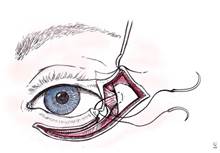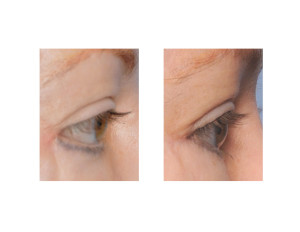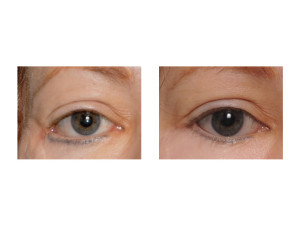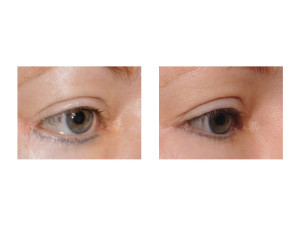Background: The position of the lower eyelid against the eyeball (globe) is of critical importance. To maintain good lubrication of the globe and to prevent the eye from drying out, the lower eyelid must be tight up against it. Like a clothesline spanning between two poles, the lower eyelid must have no slack in it and be relatively taut. Unlike the upper eyelid which opens and closes, the lower eyelid is fairly still.
The position of the lower eyelid is well known to be adversely affected by surgery due to the creation of scar and loss of lateral support. This can create a downward pulling of the lower eyelid known as ectropion. Lower eyelid ectropion deformities cause a downward and outward roll of the eyelid making it lose contact with the eyeball. When this happens the eye develops dryness ad irrigation due to exposure. Also the natural gutter effect of the eyelid position is ‘reversed’ and tears may run out the side of the eye as opposed to being directed towards the inner lacrimal drain. (punctum)

Case Study: This 50 year old female developed ectropion of the right eye from prior lower blepharoplasty and other procedures. She has persistent dryness and itchiness of the eye and chronic tearing. She had failed two prior lower eyelid resuspension/elevation procedures.
Under general anesthesia she had a double hole lateral canthoplasty procedure. Above the desired point where the outer corner of the eye was desired to be, two transosseous burr holes were placed. A suture was passed from the outside in, attached to the lateral canthal tendon and then brought back out the other bone hole. The suture was then tied down pulling the outer corner of the eye upward and inside the lateral orbital rim.. Resuspension of the orbicularis muscle was done to complete her ectropion repair.

The double hole lateral canthoplasty procedure is as very effective procedure that solves the attachment problem. Besides a point of fixation one of its other best attributes is that it brings the attachment of the tendon inside the lateral orbital rim where it naturally is located. In moderate to severe ectropion this is my go to technique.
Highlights:
1) Lower eyelid retraction due to scar contracture is known as ectropion.
2) Manipulation of the lateral canthal tendon is a key element in lower eyelid ectropion repair.
3) Using bone holes place in the lateral orbital rim, a place of firm fixation for lateral canthal tendon repositioning is assured.
Dr. Barry Eppley
Indianapolis, Indiana




